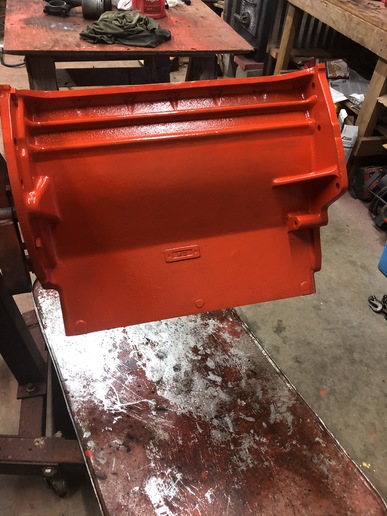Please be gentle with this Oliver newbie. I've always been a fan of orphan brands, particularly Oliver and MM, and would like to own one some day. Some of my favorite Oliver tractors are the diesel 55 series. I'm trying to decipher some of the differences between the smaller models of the series... the 1555, 1655 and 1755... since I probably wouldn't want anything bigger. Can anyone help educate me?
First off, any advantage between a 50 and a 55 series (besides the extra headlights)?
Besides the obvious HP differences, I've picked up a few clues like the 2 speed over/under trans on the 15 vs the 3 speed on all the others.
It also appears that the 155x and 165x share the same chassis, correct? So same physical dimensions? What else is shared?
Not sure of the actual size difference between a 17 and the smaller 15 and 16s. But to put things in JD language, I presume a 1655 would be close in size and ability to a 3020 and a 1755 is similar to a 4020. Would that be about right? Is the 1755 still considered a "handy" size tractor? I sure don't want anything big and clumsy for a toy tractor.
I've noticed that the operator platform is completely flat on the 17 and the dash is arranged differently (vertically). Are the hydraulic controls/consoles different too?
Did all three come in a utility model? Does a utility have a unique front axle? Or just a wide front reversed?
I've read differing opinions about the various engines. Seems like the 15 and 16 are well-liked and are all-time favorite tractors in general. I've read some not-so-nice things about the 310 engine in the 1755. Can anyone enlighten me. Is any one of these tractors more "bulletproof" than the others?
Any other big differences between these three models? Which would you choose if you could have only one? This would just be a for-fun tractor to preserve and collect, not really work that much. Maybe run a bush hog or a snowblower occasionally at most. Or pull a hayrack ride. Does any one of them command more $$ than the others?
Thanks for your input and education!
First off, any advantage between a 50 and a 55 series (besides the extra headlights)?
Besides the obvious HP differences, I've picked up a few clues like the 2 speed over/under trans on the 15 vs the 3 speed on all the others.
It also appears that the 155x and 165x share the same chassis, correct? So same physical dimensions? What else is shared?
Not sure of the actual size difference between a 17 and the smaller 15 and 16s. But to put things in JD language, I presume a 1655 would be close in size and ability to a 3020 and a 1755 is similar to a 4020. Would that be about right? Is the 1755 still considered a "handy" size tractor? I sure don't want anything big and clumsy for a toy tractor.
I've noticed that the operator platform is completely flat on the 17 and the dash is arranged differently (vertically). Are the hydraulic controls/consoles different too?
Did all three come in a utility model? Does a utility have a unique front axle? Or just a wide front reversed?
I've read differing opinions about the various engines. Seems like the 15 and 16 are well-liked and are all-time favorite tractors in general. I've read some not-so-nice things about the 310 engine in the 1755. Can anyone enlighten me. Is any one of these tractors more "bulletproof" than the others?
Any other big differences between these three models? Which would you choose if you could have only one? This would just be a for-fun tractor to preserve and collect, not really work that much. Maybe run a bush hog or a snowblower occasionally at most. Or pull a hayrack ride. Does any one of them command more $$ than the others?
Thanks for your input and education!


